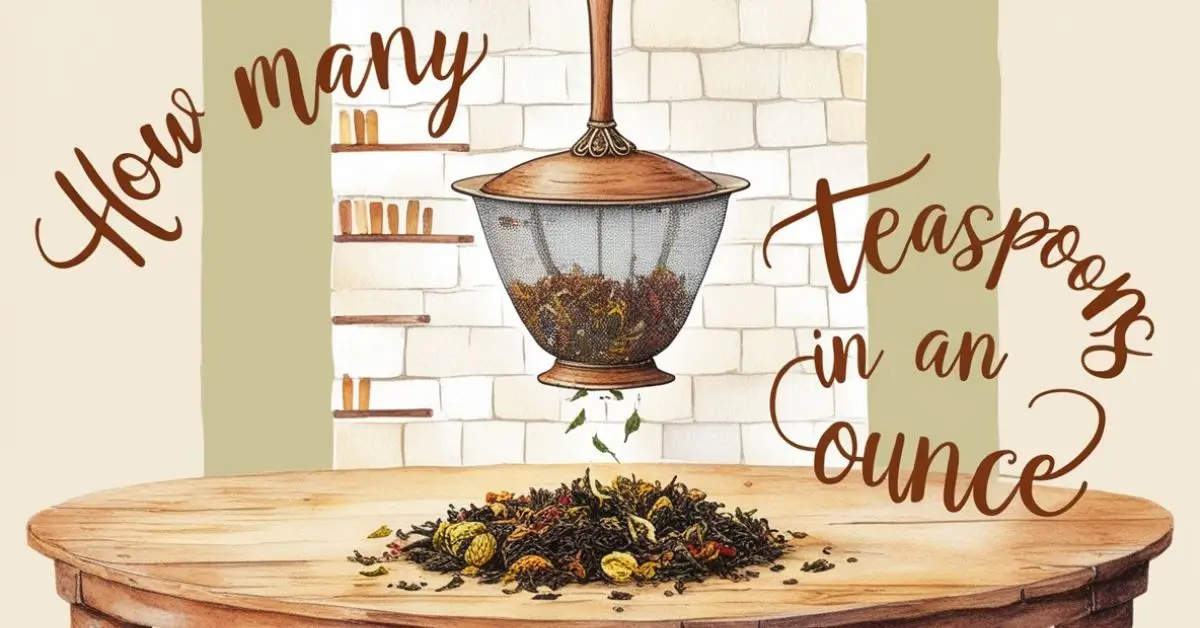When working with recipes or measurements, converting units accurately is essential, especially when dealing with precise ingredients. One common question is: how many teaspoons are in an ounce? The answer depends on whether you’re measuring liquids or dry ingredients, as their conversions differ slightly. This article provides a detailed explanation of the differences, the calculations involved, and practical examples for everyday use.
Understanding the Basics: Fluid Ounces vs. Dry Ounces
1. Fluid Ounces
A fluid ounce measures volume and is commonly used for liquid ingredients like water, milk, or oil. In the U.S. measurement system:
- 1 fluid ounce (fl oz) = 6 teaspoons (tsp).
This conversion remains consistent regardless of the liquid’s type, as it is based purely on volume rather than weight.
2. Dry Ounces
Dry ounces measure weight, making the conversion less straightforward. For dry ingredients like flour, sugar, or spices, the density of the substance plays a critical role. For instance:
- 1 dry ounce of salt equals roughly 4.76 teaspoons.
- 1 dry ounce of sugar equals about 10.6 teaspoons.
These variations occur because a teaspoon of dense material (e.g., salt) weighs more than a teaspoon of lighter material (e.g., flour).
Liquid Ounce to Teaspoon Conversion: The Standard Rule
Liquid ingredients are straightforward to measure:
- 1 fluid ounce = 6 teaspoons.
Here’s how this conversion applies:
- 2 fluid ounces = 12 teaspoons.
- 3 fluid ounces = 18 teaspoons.
- 4 fluid ounces = 24 teaspoons.
This formula simplifies scaling recipes when you need to adjust quantities. For instance, if a recipe calls for 3 ounces of vanilla extract, it translates to 18 teaspoons.
Dry Ounce to Teaspoon Conversion: Ingredient-Specific Calculations
For dry ingredients, conversions depend on density. To determine how many teaspoons are in a dry ounce, consider the weight of 1 teaspoon of the ingredient in grams:
Teaspoons in 1 ounce=28.35weight of 1 teaspoon (in grams)
Examples:
- Sugar: 1 teaspoon weighs approximately 4.2 grams.28.354.2≈6.75 teaspoons per ounce
- Salt: 1 teaspoon weighs about 5.9 grams.28.355.9≈4.8 teaspoons per ounce
These calculations highlight why the number of teaspoons per ounce varies across ingredients.
A Comparison Chart for Common Ingredients
To simplify your conversions, here’s a chart for quick reference:
| Ingredient | Teaspoons per Ounce |
|---|---|
| Granulated Sugar | ~10.6 |
| Table Salt | ~4.76 |
| All-Purpose Flour | ~11.29 |
| Baking Soda | ~4.92 |
| Butter | ~6 |
This table demonstrates the importance of understanding ingredient density when measuring dry ounces.
How to Measure Ingredients Accurately
1. Liquid Ingredients
- Use a liquid measuring cup with marked increments.
- For small quantities, use a teaspoon and ensure it is filled to the brim for accuracy.
2. Dry Ingredients
- Scoop the ingredient into a dry measuring spoon.
- Use a flat edge, such as a knife, to level off the excess for precision.
3. Use a Kitchen Scale
For maximum accuracy, especially in baking, weigh the ingredient. Knowing the weight of 1 teaspoon of the ingredient lets you calculate the teaspoons in an ounce using the formula mentioned earlier.
Applications in Everyday Life
1. Baking
Precise measurements are crucial in baking, where small deviations can affect the final product. Knowing how many teaspoons are in a dry ounce helps when scaling recipes or substituting ingredients.
2. Cooking
Cooking often involves adjusting recipes for smaller or larger servings. For example, if a recipe calls for 2 ounces of lemon juice, you’ll know it equals 12 teaspoons without needing a measuring cup.
3. Nutrition
Understanding these conversions is beneficial for portion control or calculating ingredient intake. For instance, if a diet plan specifies consuming 1 ounce of sugar daily, this equates to approximately 10.6 teaspoons.
Pro Tips for Perfect Measurements
- Invest in a Kitchen Scale: Measuring by weight ensures accuracy, especially for dry ingredients.
- Double-Check Conversions: When dealing with new recipes, verify conversions to avoid mistakes.
- Use Accurate Measuring Tools: Properly calibrated spoons and cups make a difference.
Visual Learning
For a step-by-step explanation of these conversions, watch this helpful YouTube video. It provides practical demonstrations for both liquid and dry measurements, making it easier to understand the differences.
Conclusion
Knowing how many teaspoons are in an ounce simplifies cooking, baking, and portioning ingredients accurately. While liquid conversions are straightforward (1 ounce = 6 teaspoons), dry conversions depend on the ingredient’s density. By mastering these basics and using proper tools, you can confidently tackle any recipe or measurement challenge.
FAQ
1. Why do conversions differ for liquids and dry ingredients?
Liquid ounces measure volume, while dry ounces measure weight. Since different substances have varying densities, the number of teaspoons in a dry ounce changes depending on the ingredient.
2. Can I use the same conversion for all dry ingredients?
No. Dry ingredient conversions depend on the weight of 1 teaspoon of the specific ingredient.
3. Is there a difference between U.S. and metric measurements?
Yes. In the metric system, 1 teaspoon equals 5 milliliters, while in the U.S. system, it equals approximately 4.93 milliliters.











